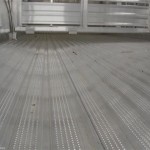Do You Hang Doors Before Flooring? A Comprehensive Guide
The question of whether to install doors before or after flooring is a common one for homeowners and construction professionals alike. There is no single, universally correct answer, as the optimal sequence depends on a variety of factors, including the type of flooring, the type of door, the existing conditions of the space, and individual preferences. Understanding the advantages and disadvantages of each approach is crucial for making an informed decision that minimizes potential problems and ensures a professional-looking final result.
This article explores the arguments for both options, providing a detailed analysis of the considerations involved. It aims to equip readers with the knowledge necessary to determine the best approach for their specific project.
Considerations for Hanging Doors After Flooring Installation
Hanging doors after the flooring is installed is a popular approach, particularly for certain types of flooring and in scenarios where precision and a clean aesthetic are paramount. This method offers several advantages in terms of achieving a consistent and even look.
One of the primary benefits is the ability to establish a precise and consistent door-to-floor gap. This gap is essential for allowing the door to swing freely without rubbing on the floor covering. With the flooring already in place, it is far easier to accurately measure and adjust the door jambs, ensuring that the door hangs perfectly level and operates smoothly. This is particularly important for thicker flooring materials such as hardwood or tile, where even a slight miscalculation can lead to operational issues.
Another advantage lies in the prevention of damage to the flooring during door installation. Installing doors can involve hammering, sawing, and other activities that could potentially scratch, dent, or otherwise mar the surface of a newly installed floor. By delaying the door installation until after the flooring is complete, the risk of accidental damage is significantly reduced. This is especially relevant for delicate or expensive flooring materials, where even minor imperfections can detract from the overall appearance and value.
Furthermore, installing doors after flooring can simplify the process of trimming and fitting the door jambs. The flooring provides a clear reference point for cutting the jambs to the correct length, ensuring a seamless transition between the door frame and the floor. This is particularly beneficial when dealing with uneven subfloors or existing door frames that are not perfectly square. The flooring acts as a guide, allowing for precise adjustments that result in a professional and aesthetically pleasing finish.
However, hanging doors after flooring also presents some potential drawbacks. One concern is the need for careful protection of the new flooring during the door installation process. Drop cloths and other protective measures are essential to prevent scratches, spills, and other damage. This requires extra time and effort to ensure that the flooring remains in pristine condition. Another challenge is the potential for difficulties in maneuvering tools and materials within the confined space of a finished room. This can be particularly problematic when installing heavy or bulky doors.
Moreover, the flooring installation itself must be meticulously planned to accommodate the door frames. A consistent and even reveal (the gap between the door frame and the wall) must be maintained, which may require careful adjustments to the flooring layout and cutting. This is especially important when using decorative flooring materials with patterns or borders, where precise alignment is crucial for achieving a visually appealing result.
Considerations for Hanging Doors Before Flooring Installation
Hanging doors before the flooring is installed is another approach with its own set of advantages and disadvantages. This method is often preferred in new construction or renovation projects where the flooring is relatively thin and the door frames are being replaced or significantly altered.
One of the key benefits is the ease of installation. With the subfloor exposed, it is much easier to maneuver tools and materials around the door frame. This can be particularly advantageous when installing heavy or complex door systems. The absence of finished flooring also eliminates the risk of damage during the installation process, simplifying the workflow and reducing the need for protective measures.
Another advantage is the ability to easily adjust the height of the door frame to accommodate the finished flooring thickness. This is particularly important when using thinner flooring materials, such as vinyl or laminate. By setting the door frame at the correct height before the flooring is installed, the door will automatically have the proper clearance when the floor is complete. This eliminates the need for additional trimming or adjustments after the flooring is in place.
Furthermore, installing doors before flooring can simplify the process of waterproofing or sealing the subfloor around the door frame. This is especially relevant in bathrooms or other areas that are prone to moisture. By sealing the subfloor before the flooring is installed, you can create a more effective barrier against water damage and prevent potential problems in the future.
However, hanging doors before flooring also presents some potential challenges. One of the primary concerns is the need for accurate calculations and measurements to ensure that the door frame is set at the correct height. If the calculations are incorrect, the door may either rub on the floor or have an excessively large gap, both of which can be unsightly and functional problems. This requires careful planning and attention to detail.
Another drawback is the potential for the door frames to be damaged during the flooring installation process. While the risk of damage is lower compared to installing doors after flooring, it is still possible for the frames to be bumped, scratched, or otherwise marred by tools or materials. Protective measures, such as wrapping the frames with cardboard or plastic, are essential to prevent this from happening. Moreover, the flooring installation must be carefully executed to avoid damaging the door frames or compromising their structural integrity.
In addition, installing doors before flooring can make it more difficult to achieve a perfectly flush and seamless transition between the door frame and the floor. The flooring must be carefully cut and fitted around the door frame, which can be a time-consuming and challenging task, particularly when using decorative flooring materials or dealing with irregular door frames. This requires a high level of skill and precision to ensure a professional-looking result.
Key Factors Influencing the Decision
Several key factors influence the decision of whether to hang doors before or after flooring installation. These factors should be carefully considered to determine the optimal approach for each specific project.
Flooring Type and Thickness: The type and thickness of the flooring material play a significant role in the decision-making process. Thicker flooring materials, such as hardwood or tile, generally favor installing doors after flooring. This allows for precise adjustment of the door jambs to ensure proper clearance and smooth operation. Thinner flooring materials, such as vinyl or laminate, may be more suitable for installing doors before flooring, as the door frame height can be easily adjusted to accommodate the finished floor thickness.
Door Type and Installation Requirements: The type of door being installed also influences the decision. Heavy or complex door systems may be easier to install before flooring, as the absence of finished flooring provides more space for maneuvering tools and materials. Simpler door systems may be equally easy to install either before or after flooring. The specific installation requirements of the door, such as the need for shimming or adjustments to the door frame, should also be considered.
Existing Conditions and Renovation Scope: The existing conditions of the space and the scope of the renovation project are important factors. In new construction, where the subfloor is exposed and the door frames are being replaced, installing doors before flooring may be the preferred option. In renovation projects, where the flooring is being replaced but the door frames are remaining in place, installing doors after flooring may be more practical. The condition of the existing door frames and the levelness of the subfloor should also be assessed.
Skill Level and Available Tools: The skill level of the installer and the availability of appropriate tools are also relevant considerations. Installing doors and flooring requires a certain level of expertise and experience. If the installer is not comfortable with either task, it may be best to hire a professional. The availability of specialized tools, such as a jamb saw or a laser level, can also make the job easier and more accurate.
Ultimately, the decision of whether to hang doors before or after flooring is a matter of careful consideration and weighing the advantages and disadvantages of each approach. By taking into account the factors outlined above, homeowners and construction professionals can make an informed choice that results in a successful and aesthetically pleasing outcome.

7 Smart Reasons To Install Doors Before Flooring Expert Guide For A Flawless Renovation

Vinyl Plank Installation Tips For Doorways Halls Walls And Closets

7 Smart Reasons To Install Doors Before Flooring Expert Guide For A Flawless Renovation

How To Hang A Door Young House Love

7 Smart Reasons To Install Doors Before Flooring Expert Guide For A Flawless Renovation

Solving The Doorway Dilemma Laminate Flooring Tricks Doing Impossible Diy Howto

How To Install Laminate Flooring Around Doors Builddirect

Here S How Keep Front Door From Rubbing On Carpet

How To Hang An Interior Door With S Wikihow

How To Fix Big Door Jamb Gaps After New Floor Install Easy Diy Trim Repair
Related Posts








